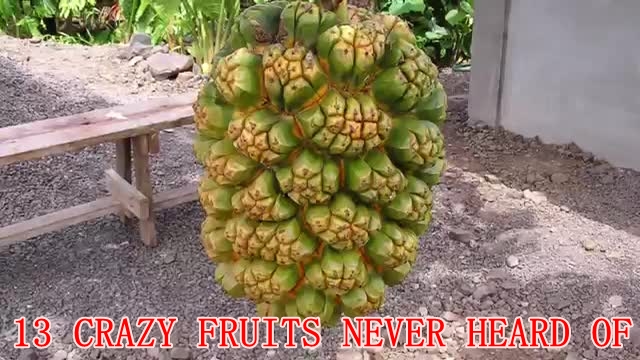The Go to Berry
Goji berry is a small tree with a big reputation, but does it live up to the ‘superfood’ hype? Penny Woodward investigates, and explains how to grow it.
Let’s cut to the chase: goji berry is an interesting plant with good flavour and many uses, plus it is easy to grow. It is definitely worth trying in your garden: it’s something different and does offer high levels of vitamin C, antioxidants and other health benefits. However, current research shows that its main superfood claims don’t stack up. In any case, it has always been our view that ‘superfood’ is an unsatisfactory term – what humans need is a diverse array of organic food to provide all-round nutrition.
Goji berry (Lycium barbarum) is a native of China, Korea, Nepal and Japan and is now found growing in the warmer, but not tropical, regions of the world. It is also known as Chinese boxthorn and wolf berry. In China it is called kau kei or gou qi, while the Japanese call it kuko.
Grown as a small tree to about 2m high, the goji berry has long, arching branches that make it suitable for espaliering or tying to a trellis or wall. It has mid-green, ovate leaves and mauve flowers. These are followed by small 5–9mm long, elongated, orange or red berries. The slightly bitter leaves can be used fresh or dried as a flavouring, added to pork dishes and soups. Added to rice while cooking will give it a pleasant aromatic flavour. The small berries have a sweet/savoury anise flavour and are high in beta-carotene. Think of a small sweetish tomato to get an idea of the flavour and uses. In China, they are added to ceremonial dishes, especially those using chicken or duck. Traditionally, berries are sold at markets dried, and both the leaves and berries are made into a tea. They are regarded as being a tonic and have been used in Chinese medicine for centuries for numerous conditions.
How to grow
Goji berry grows relatively easily from seed, though fortunately not as easily as the closely related African boxthorn (L. ferocissimum), which is a weed of national significance in Australia and should never be planted. Goji berries have also become weedy in some parts of Australia, spreading from berries dropped by birds. So if you grow it, make sure you harvest all the berries.
If you have dried berries, scrape the seed from the fruit, soak in water for 24 hours and then plant into moist seedraising mix. Keep the soil moist until they have germinated, about a week later. Grow from seed or cuttings in autumn and spring, and plant into any well-drained soil in full sun. Protect young seedlings from frosts. Once these trees are established and growing well, they thrive on neglect and fruit better if not overwatered or overfed, so don’t pamper them.
Cut back in autumn after fruiting. Fruit appears on one-year-old growth so don’t cut this off or you’ll get no fruit. Harvest berries in autumn, and leaves any time of the year. Berries are best when very ripe and squishy, but turn black when bruised, so harvest by holding a bowl or tray underneath a branch and shaking gently.
Health benefits
Today, goji berries and the juice made from them are touted far and wide, and a quick search of the internet will tell you they are useful for everything from a weight-loss aid, a libido booster, to protect against cancers, as well as helping with diabetes and reducing the risk of heart disease.
However, in 2014 the Australian Consumer Association’s Choice magazine reported: “There are no large, quality trials demonstrating that [goji berry] works”. They added that there is some evidence they may inhibit the liver’s ability to break down some medications so should not be taken as a supplement if you are on anti-hypertensive or anti-diabetes drugs.
In a study of superfoods published in New Scientist in 2016,(1) the author Caroline Williams said: “There is precious little research identifying the supposedly unique active ingredients in goji berries, never mind measuring their health benefits”.
Williams goes on to explain that the medicinal attributes are usually tied to Lycium barbarum polysaccharides or LBPs. There is apparently some doubt as to whether those found in goji berries are actually polysaccharides and there are no good human trials measuring which components get into the bloodstream and what they do.
As mentioned, the berries do contain antioxidants, including zeaxanthin, a compound linked to the prevention of age-related degeneration of eye cells, but this is also found in other common foods such as spinach and cabbage. Researchers have recently reported a potential new use for goji berry plants.(2) They’ve discovered the plant contains a compound that is active against the waterborne parasites that cause schistosomiasis and fascioliasis. These lifethreatening parasitic diseases affect more than 600 million people worldwide. So it is clear more research is needed to unlock goji berry’s secrets. In the meantime, go ahead and plant a tree, but perhaps question whether the expensive dried berries or juice justify the cost.
references
1. 'A blueberry a day…' Caroline Williams, New Scientist,
6 August, 2016, page 28.
2. 'Potential new drug for two life-threatening diseases'
ScienceDaily, 5 July 2018, www.sciencedaily.com/releases/
2018/07/180705115636.htm.
Selected suppliers
Daleys Fruit Tree Nursery: daleysfruit.com.au
The Diggers Club: diggers.com.au
Mudbrick Cottage Herb Farm: herbcottage.com.au
Top: Goji Berries have a sweet/savoury flavour.
centre: The slightly bitter leaves can also be used.
right: The dried Berries can be expensive and science
is still not sure they have added health benefits.
















No comments:
Post a Comment